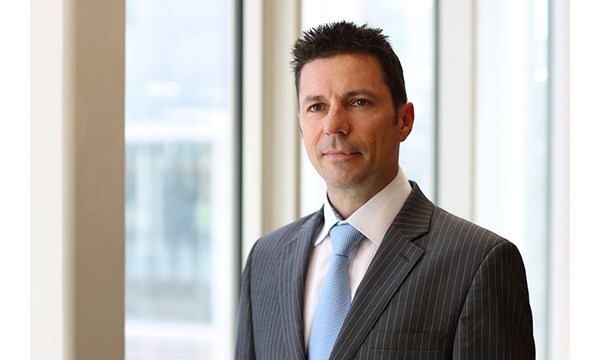Global upstream update: UK fiscal woes, Major exploration and Latin American promise
From gas opportunities to supply-chain relationships and deepwater exploration, our global update covers key industry developments.
3 minute read
Fraser McKay
Head of Upstream Analysis

Fraser McKay
Head of Upstream Analysis
As head of upstream research, Fraser maximises the quality and impact of our analysis of key global upstream themes.
Latest articles by Fraser
-
Opinion
Global upstream update: diverging development strategies in Latin America, investment at risk in Africa, and Kazakhstan supply tensions explained
-
Opinion
Is oil price volatility a threat to upstream production, investment and supply chains?
-
Opinion
Global upstream update: UK fiscal changes and an Asia-Pacific licence bonanza
-
Opinion
Global upstream update: the global sanctions slump, grappling with gas and potential US tailwinds
-
Opinion
Global upstream update: the global sanctions slump, grappling with gas and potential US tailwinds
-
The Edge
Why upstream companies might break their capital discipline rules
In our most recent Global upstream update, we explore a range of industry developments and what they are likely to mean ‒ from big gas opportunities to supply-chain relationships and the continued rise of deepwater exploration. Fill in the form to receive a complimentary copy of our report and read on for a taste of some of the topics we cover.
UK fiscal uncertainty threatens future investment
The new UK government surprised the market by announcing further changes to North Sea fiscal policy, after a spate of alterations in the last two years. The Energy Profits Levy is being increased to 38%, bringing the total marginal tax rate on North Sea oil and gas production to 78%. Its sunset has been extended to 31 March 2030 and the price floor mechanism (ESIM) has been retained. The investment allowance has been abolished, though the decarbonisation allowance has been retained, and the capital allowance is set to be reduced.
The Chancellor of the Exchequer’s 30 October Autumn Statement should provide details on the crucial capital allowances. But until then, ambiguity remains. The industry response has been one of extreme disappointment, given the lack of fiscal policy dialogue the new government had promised.
Scratching the subsurface: Majors’ exploration performance
Deepwater continues to dominate the Majors’ exploration value-creation benchmarks. ExxonMobil added the most resources in volume terms between 2014 and 2023, while BP and Eni discovered the most gas, albeit often with different commercial outcomes.
Material development value in onshore and shelf Egypt (Western Desert and the Nile Delta) is helping to balance Eni’s exposure to deepwater exploration. Equinor’s exploration on the mature Norwegian shelf marks it out among the Majors. Shell’s success in Oman is contributing to material onshore value, while deepwater success in Namibia is a key strategic priority. TotalEnergies has made big deepwater finds in Namibia, South Africa and Suriname. Meanwhile, the bulk of Chevron’s value is being generated by deepwater US Gulf of Mexico assets, with the remainder derived from Egypt’s Nile Delta.
One of the hottest exploration plays is the Orange basin. We have mapped the sweet spots, which extend from Namibia to South Africa, where new wells are spudding soon (fill in the above form to see more). Watch, too, for bidding rounds in India, Bangladesh and Pakistan.
US Lower 48: balancing efficiency and oil field services
US Lower 48 operators are delivering more with less, as reduced downtime and higher-spec equipment create efficiency wins.
Drilling efficiency has increased by over 30% since 2020. In the Permian Basin, for example, if efficiency had plateaued since 2020, 90 additional Permian rigs would have been needed to reach current output. Meanwhile, the deployment of Simul-frac and Trimulfrac equipment (completing two or three wells at once) has reduced completion time and cuts costs for hydraulic fracking.
It is important not to confuse efficiency gains with one-to-one improvements in well cost, however. Drilling and pumping efficiency gains are key to cost improvement, but only account for 40% of drilling and completions (D&C). For example, a 10% efficiency improvement yields a 4% decrease in total D&C spending.
Step-changes in cost deflation will be operator dependent. Each operator is on its own journey in terms of completion layouts and equipment fuel type.
Latin America: the potential to monetise big gas
A number of countries in Latin America are over-resourced and under-invested when it comes to gas. Growing domestic demand and incentives to enter liquified natural gas (LNG) export markets could finally trigger some development, however.
The lack of gas investment is largely down to unattractive economics, amid insufficient infrastructure and market and regulatory constraints. Case-study timelines don’t offer much cause for optimism either: some discoveries (for example, in Venezuela) were made more than three decades ago. And it remains to be seen when the Guyanese, Surinamese and Colombian discoveries will be monetised.
Domestic market routes require high upfront capital expenditure, and the size and duration of many discoveries aren’t fully understood, making it more difficult to evaluate project economics. Commercial projects must demonstrate high productivity and cost-effectiveness.
There are two options when it comes to offshore gas: pipe to shore or LNG. This is primarily an issue for Colombia, Guyana and Suriname. Floating liquified natural gas (FLNG) could offer a faster and more flexible solution for ‘smaller’ fields. Onshore gas should be easier to develop, but Argentina and Peru need to underwrite new pipe egress to feed domestic markets.
The combined interests of governments, national oil companies (NOCs) and international oil companies (IOCs) could drive gas developments forward. However, above-ground risks in Venezuela, Colombia and Guyana are delaying investment decisions.
Fill in the form to receive a complimentary extract from our Global upstream update.








